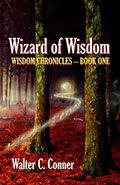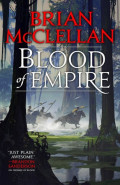Children of Earth and Sky
By Guy Gavriel Kay

- Children of Earth and Sky
-
Author: Guy Gavriel Kay
-
Publisher: Hodder and Stoughton
- ISBN: 978-1473628137
- Published: May 2017
- Pages: 592
- Format reviewed: Paperback
- Review date: 10/12/2017
- Language: English
In short, this is a story set in a fantasy version of European renaissance including trade, religion and politics. You can draw parallels between different countries and religions in the book to real world versions of the same.
But simply describing a book in this way is somewhat lazy and misses the author’s intention.
The story is grounded in and inspired by real world history and culture, which gives colour to the story, so places and people seem familiar to the reader, even if only a passing resemblance. However the world, place, people and religions are very much a fantasy one. The politics and relationships make comment on real world approaches but does not attempt to attribute that to a specific person or people. To do so would be clumsy and this book is definitely not.
The setting is low fantasy with little in the way of magic or non-human races, the only exception being the presence of ghosts or spirits of those who have departed. The author has written other books set in the same world (The Lions of Al-Rassan, The Sarantine Mosaic, and The Last Light of the Sun), but this is a standalone novel.
The story is told, not through nations or princes, but by the lives of individuals. These start out as separate tales, Danica a would be raider from Senjan, Pero an artist and Leonora a young woman both from Eressa, Marin a merchant from Dubrava and Damaz an army trainee in Mukar. As there tales are told they start to overlap and become one story.
By using characters that are not Kings and Queens, not able to influence at a high political level, as his main protagonists, Kay allows the reader to find familiarity there as well. We relate to characters and their motivation as we could picture ourselves or our friends making similar decisions if we found ourselves in that position. This sense of empathy carries you though the twists of the tale and encourages you to care about the outcomes.
The plight of women is highlighted in both Danica's and Leonora's experience. Very different people from different places, but both struggling with gender expectations of their respective cultures. The characters deal with the issues pragmatically even when there option is to flee or suffer... the "or else" is not dwelt on by the author, but the unsaid is clear. This resonates with our real world understanding of gender bias, although our options are not so stark, the attitude is familiar.
With the political reasons for nation’s disagreements and the inevitability of war and conflict laid plain, the human cost sits a little starkly, but without being gruesome or unnecessarily bloody. The fantasy element of heroism and sacrifice offer the reader some insulation but you are still left with the terrible pointless cost of it all.
The book overall is a character driven story set against a rich fantasy backdrop that captures and engages the reader.
Written on 10th December 2017 by Karen Fishwick .











